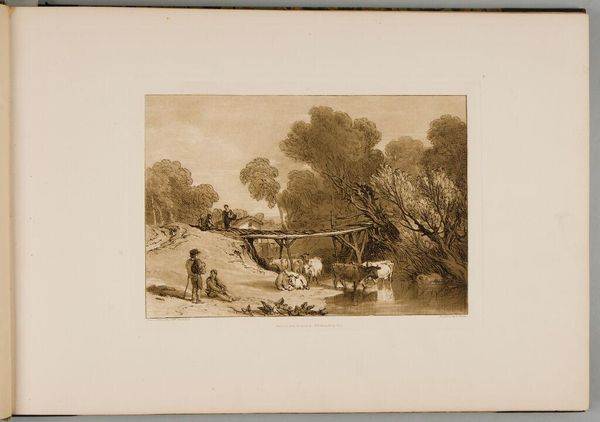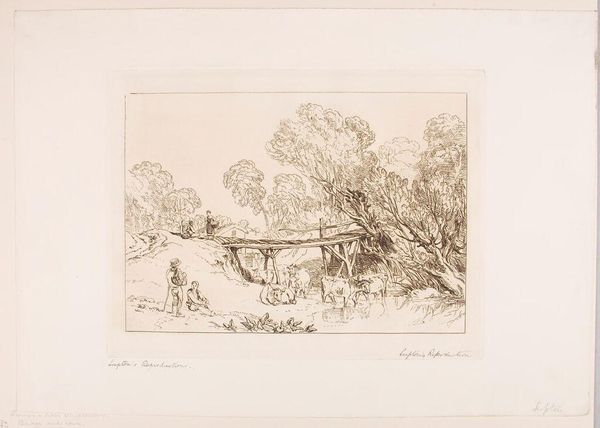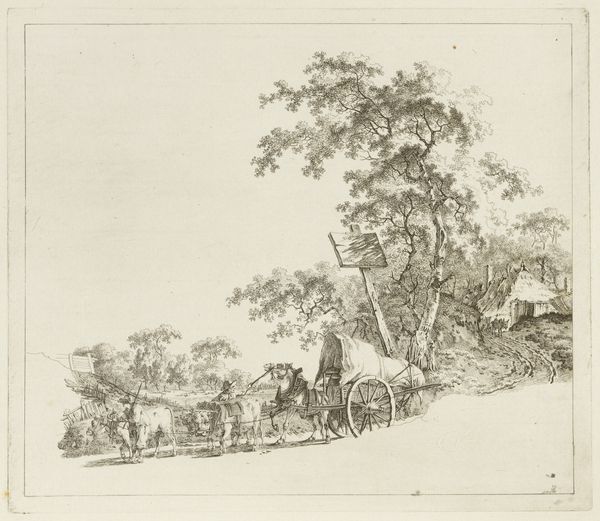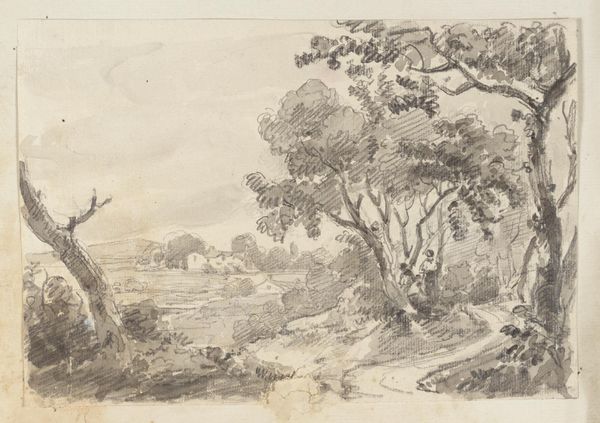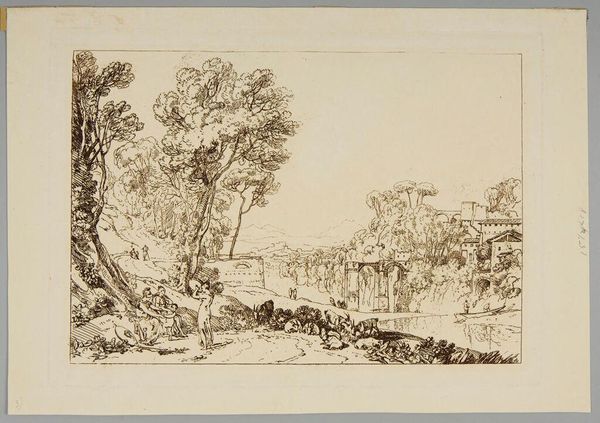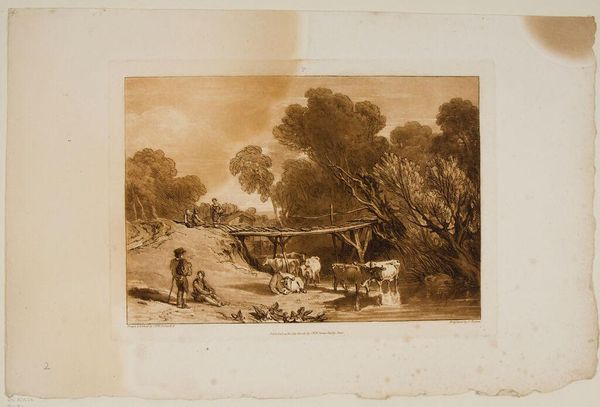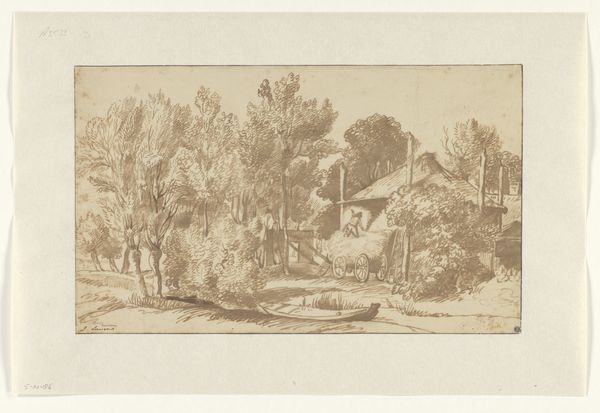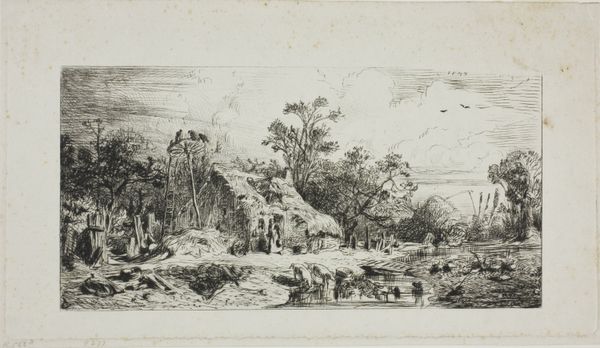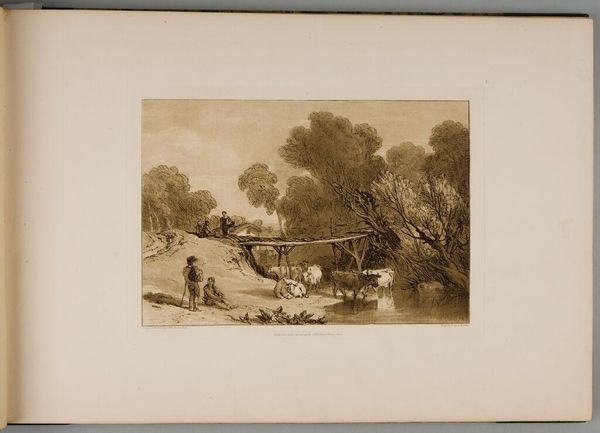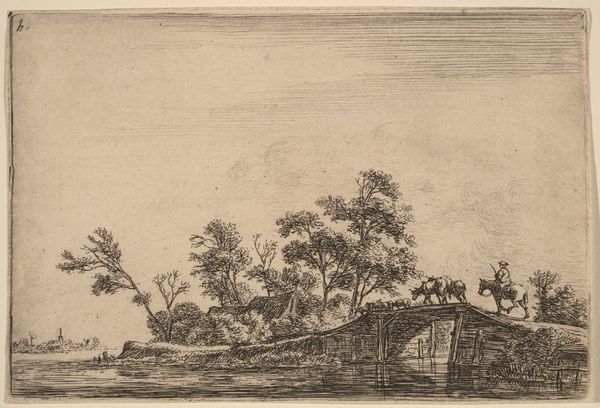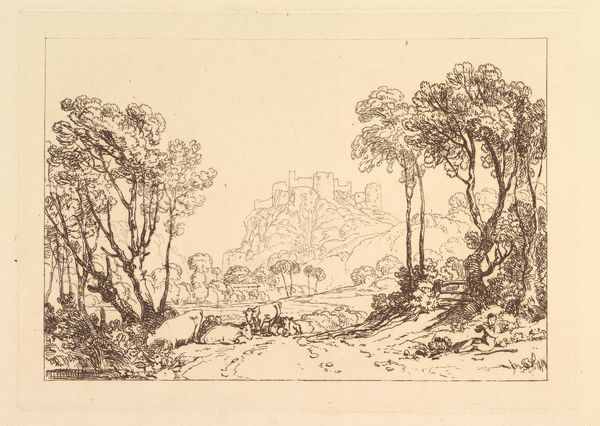
Copyright: CC0 1.0
Curator: This is Joseph Mallord William Turner's "Bridge and Cows," currently housed at the Harvard Art Museums. Editor: It feels incredibly serene, almost dreamlike. The delicate lines create a sense of quietude, a pastoral scene undisturbed. Curator: Exactly. Turner's process involved etching, allowing for detailed lines that invite consideration of the rural labor depicted. This scene is not just pretty; it's about the relationships between humans, animals, and the land. Editor: And the bridge itself – a material connection, enabling the movement of goods and people. How does this construction intersect with the pastoral ideal? Curator: Turner acknowledges a changing rural landscape, one where infrastructure enables the movement of both people and capital. This movement inevitably has a social impact. Editor: A reminder that even the most seemingly idyllic scene is embedded in a network of production and exchange. It makes me think about access, who benefits and who is burdened by this construction. Curator: Right, thinking about these details and relationships helps us unpack the historical and cultural significance of this seemingly simple landscape. Editor: Considering the labor, materiality, and social context brings it to life. Curator: Indeed. It shows how art allows us to engage with our social and political landscape. Editor: A humble reminder that art is never truly separate from the material world.
Comments
No comments
Be the first to comment and join the conversation on the ultimate creative platform.
